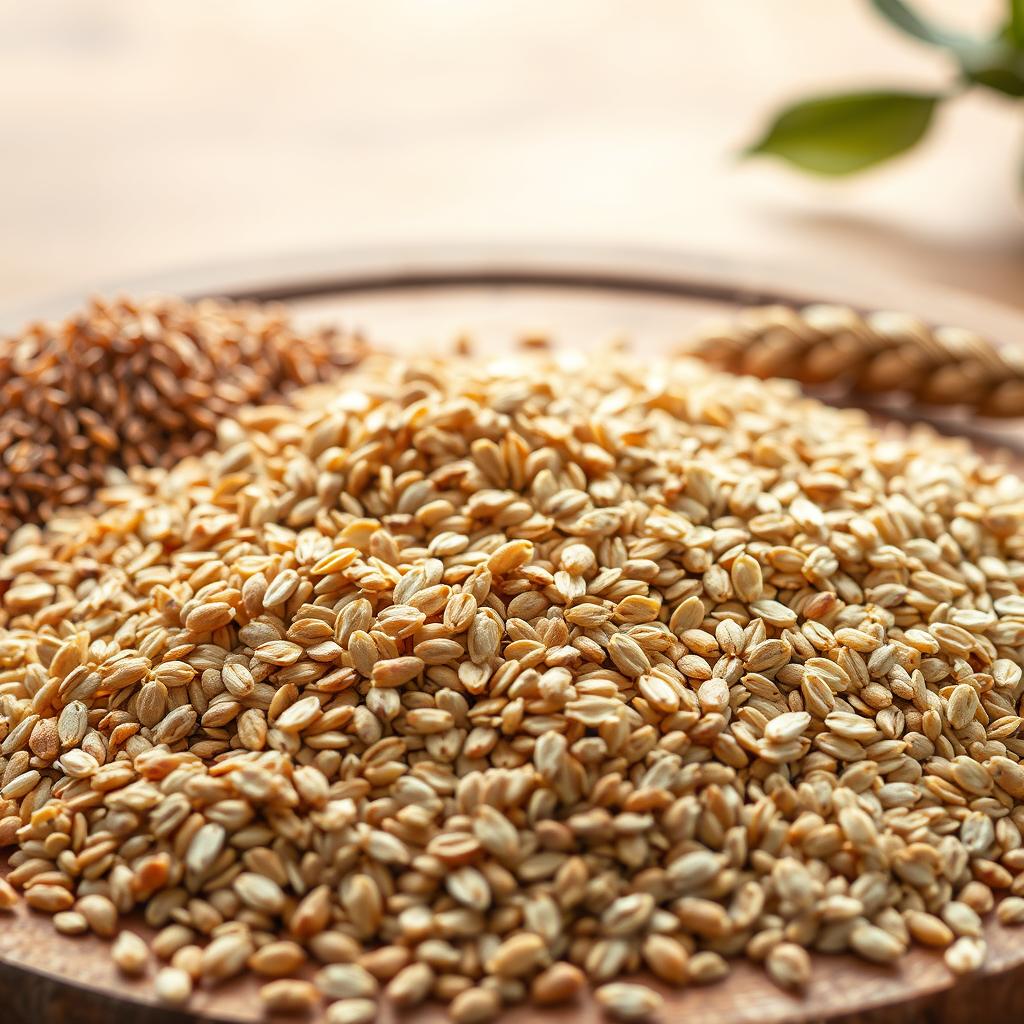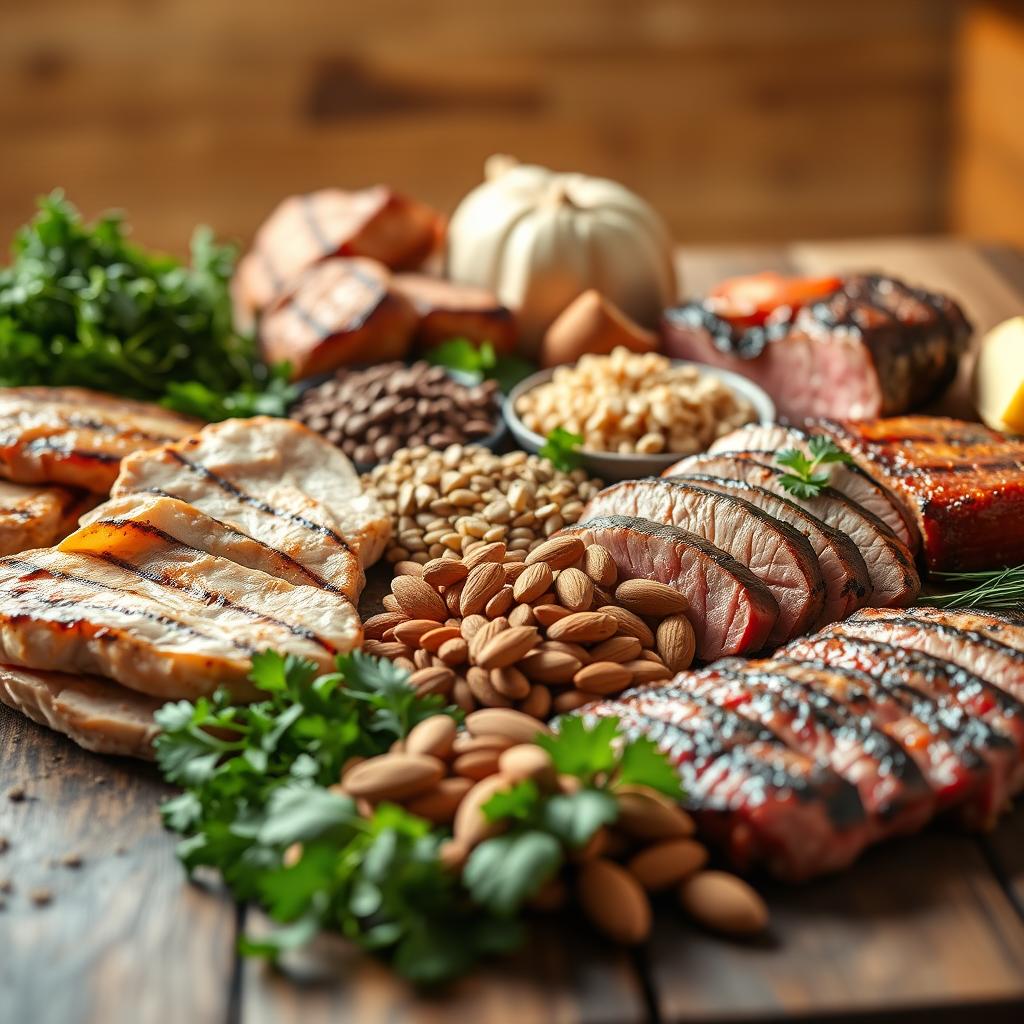As I enjoy a meal with vibrant greens and wholesome grains, I think about my journey. My eating habits used to focus on convenience, not nourishment. But learning about the impact of food on health, especially heart health, changed me.
I started exploring heart-healthy recipes and balanced diets. Now, I’m excited to share a dietitian’s guide to heart-healthy meals. You’ll find delicious, dietitian-approved meals that support a healthy heart and inspire a vibrant lifestyle.
Key Takeaways
- Heart-healthy meals focus on whole, minimally processed foods.
- Incorporating fruits and vegetables can significantly benefit heart health.
- Whole grains are a better choice than refined grains for maintaining a healthy heart.
- Healthy proteins, especially plant-based options, are essential for a balanced diet.
- Meal planning and preparation can simplify the journey to heart-healthy eating.
Understanding the Importance of Heart-Healthy Eating
Heart-healthy eating is crucial for lowering heart disease risk. It’s a major cause of death in the U.S. I always talk about how nutrition for heart health is vital. Foods high in saturated fats, cholesterol, and sugars can harm your heart.
Vandana Sheth, a registered dietitian, says managing cholesterol with food is key. She emphasizes the need for dietary changes.
Heart disease affects millions in the U.S., with many needing meds to control cholesterol. This highlights the need for heart-healthy eating. Eating more fruits, veggies, whole grains, and lean proteins helps your heart. Making smart food choices is essential for a healthy heart.
A Dietitian’s Guide to Heart-Healthy Meals

When I think about heart-healthy meals, I focus on nutrients that help the heart. I aim to eat more fruits, vegetables, whole grains, and healthy fats. These foods are key to a dietitian-approved meal plan.
By choosing these foods, I can protect my heart and enjoy tasty meals.
Key Components of a Heart-Healthy Diet
Fruits and vegetables are essential for heart health. They’re full of vitamins, minerals, and antioxidants. These nutrients offer many health benefits.
Whole grains like quinoa, brown rice, and oats are also important. They help with digestion and give us energy. Healthy fats in avocados, nuts, and seeds are good for the heart without adding too many calories.
Each food plays a big role in keeping my heart healthy and improving my overall well-being.
Understanding Serving Sizes and Portions
Proper serving sizes are key to healthy meal planning. I make sure to eat the right amount of nutrient-dense foods. Using measuring cups or a food scale helps me get it right.
Controlling portions prevents overeating and helps me stay at a healthy weight. This supports a heart-healthy lifestyle. By focusing on healthy food choices and portion sizes, I develop better habits for my heart.
Fruits and Vegetables: The Foundation of Heart Health

Fruits and vegetables are key for heart health. They are full of vitamins, minerals, and fiber. These foods boost wellness and make meals tasty. Adding them to my diet has been a game-changer. I suggest trying different types to see what you like.
My Favorite Fruits and Vegetables
Avocados are a favorite of mine. They’re packed with healthy fats and potassium, which help control blood pressure. Blueberries and spinach are also great. They offer antioxidants that fight oxidative stress. Adding these to my diet has really helped my heart health.
Tips for Incorporating More Produce into Your Diet
To eat more heart-healthy foods, add fruits and veggies to every meal. Mix spinach into your morning smoothie or have a salad at lunch. For dinner, try recipes like stuffed bell peppers or vegetable stir-fry. Even small changes can make a big difference in how much produce you eat.
Whole Grains: Choosing Wisely for Your Heart

Whole grains are key for a healthy heart. They offer many benefits over refined grains. Whole grains keep their fiber, vitamins, and minerals, which help lower cholesterol and control blood sugar.
Studies show that eating whole grains can reduce heart disease risk. The fiber in them supports heart health and helps with weight control. I choose oats, quinoa, and brown rice for their nutritional value and health benefits.
Healthy Protein Sources: What to Include

Choosing the right protein sources is key for heart health. There are many options to make meals heart-healthy and nutritious. The right amount of protein helps keep you well and at a healthy weight.
Plant-Based Proteins: Nuts and Legumes
Plant-based proteins like nuts and legumes are great for heart health. Almonds, for example, are full of protein, healthy fats, and fiber. Chickpeas are also good, helping to lower cholesterol.
These foods make it easy to add important nutrients to my diet. Plus, they taste great in my meals.
Other Healthy Protein Options: Fish and Lean Meats
Fatty fish like salmon and trout are also good for the heart. They’re full of omega-3 fatty acids. Lean meats like chicken and turkey are also good choices.
They offer high-quality protein without the bad fats found in red meats. These options help me make meals that are good for my heart and overall health.
Practical Tips for Meal Planning and Preparation
Healthy meal planning is crucial for a heart-healthy diet. I spend some time each week planning my meals. This ensures I eat a variety of foods like fruits, veggies, whole grains, and proteins.
By planning ahead, I meet my nutritional needs and enjoy different flavors. It’s a great way to stay on track with my diet.
Batch cooking is a top tip for me. I make big batches of healthy recipes like quinoa salads and stir-fries. This way, I always have a nutritious meal ready.
Freezing portions helps on busy days when cooking seems hard. It saves time and keeps me away from unhealthy foods.
I always have essential items like canned beans, frozen veggies, and oats. They help me make quick, healthy meals. I also like trying new things, like chia seeds in smoothies or avocados in salads.
These small changes make healthy eating fun and exciting. It makes it easier to keep up with my heart-healthy goals.
If you want to read more article,please click here.
If you want to know more,then click here.
Leave a Reply